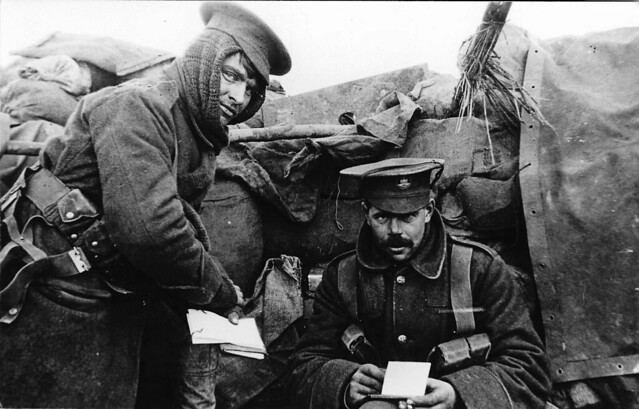29th January 1915
The Dorsets remained in billets. A and D Company remained in the trenches. The 15th Brigade’s diary notes that they made good progress today working on the trenches and that more wire was laid in front of them. A bright night, lit by a gibbous moon, led to “considerable sniping”.
I’ve missed a couple of things lately and so I apologise. Time is very, very limited at the moment. Firstly I missed a footnote which give us a bit more information about the fascinating Frederick Morley. I’ve added this detail as a comment to the 26th January post. Find out about his nickname and capacity for Anglo Saxon profantities.
I also missed a death yesterday and I’ll list it here to flesh out this post. Welshman Rees Harris, a former collier from Aberdare, was killed in action. There’s no record of how he met his death in the Dorsets’ diary; not even a mention, but the Norfolk’s diary entry records one death from sniping which could have been him. The only death from the Norfolks listed by CWGC for the 28th January was interred in Thame, Oxfordshire, so he presumably died of wounds at home.
Harris was attested into the 3rd Battalion Dorsets having served for 10 years in the Cardigan Royal Garrison Artillery Militia. He’d only arrived in France on the 4th December. Intriguingly he signed up with his age as 37 years and six months. The cut off for regular army was 38 and the Special Reserve was 40. He was 36 in 1911, according to the census, which made him 40 in 1915. It appears that Harris had told a little white lie to go to war. It wasn’t uncommon, but it was uncommonly brave. His mother, Martha, signed for his effects with the mark of a cross.
